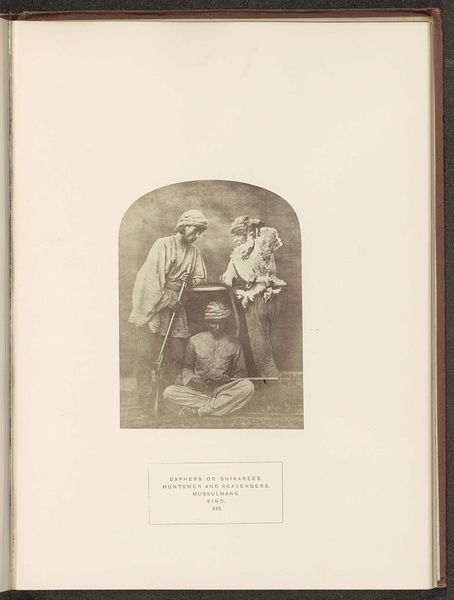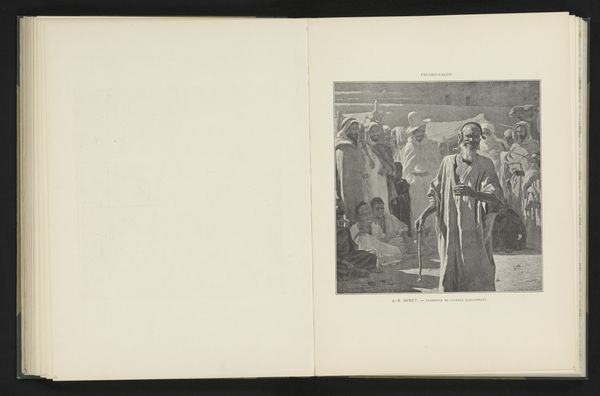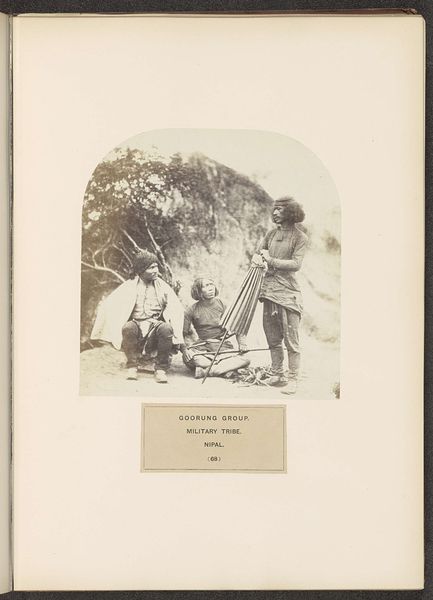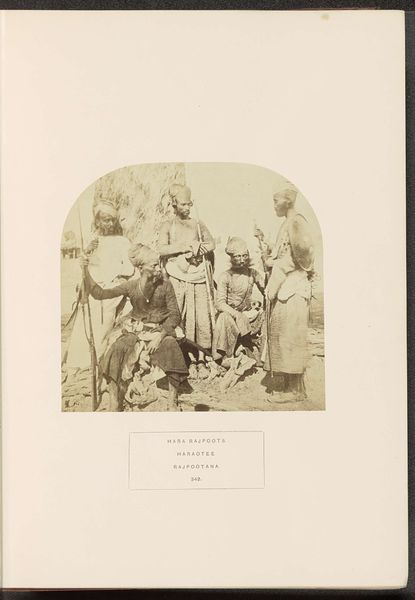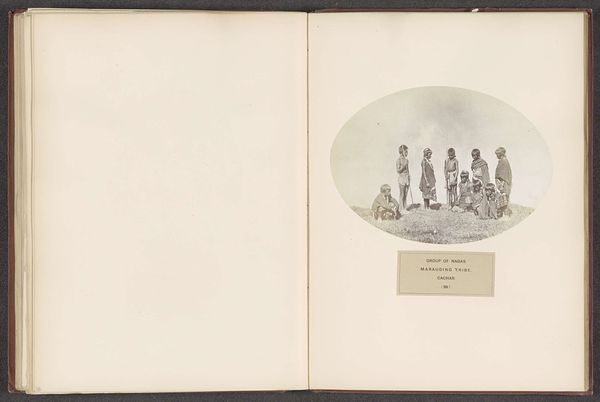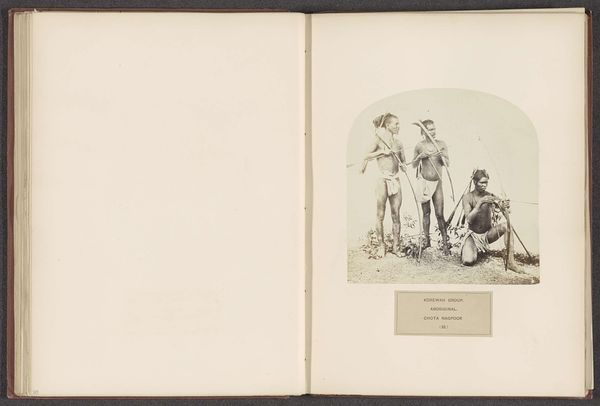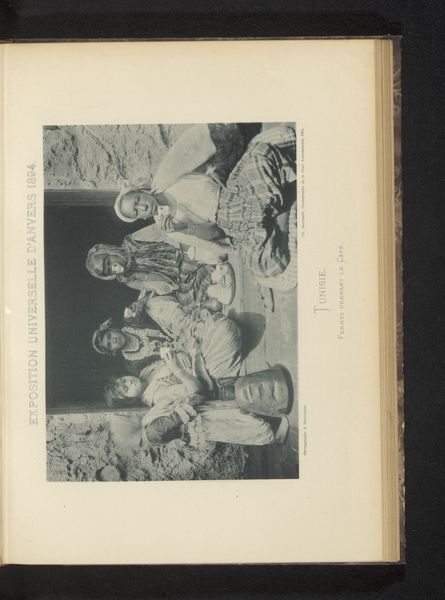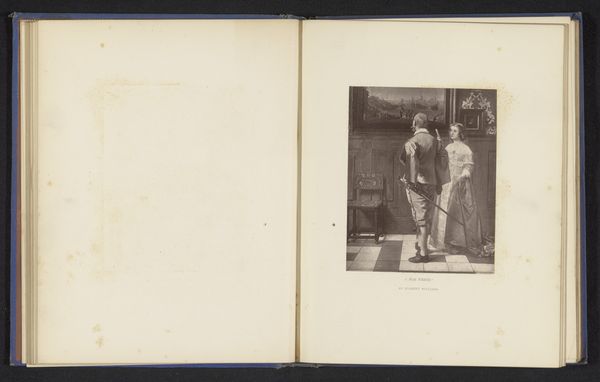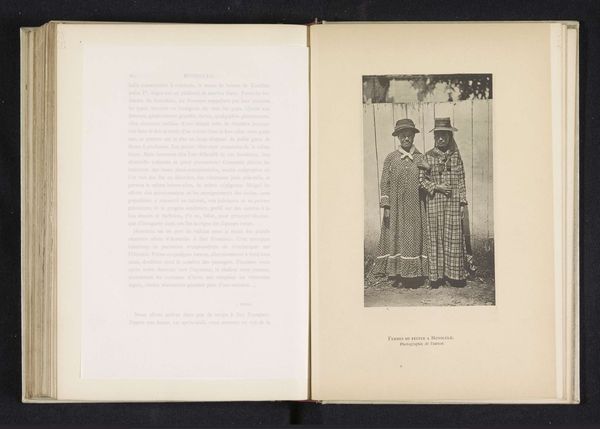
photography
#
portrait
#
photography
#
orientalism
#
genre-painting
Dimensions: height 170 mm, width 205 mm
Copyright: Rijks Museum: Open Domain
Curator: Before us, we have "Three Men from Bhutan on the Street", a photograph by Benjamin Simpson dating to before 1868. My immediate reaction is one of historical intrigue. There's an almost ethnographic quality. Editor: It's quite posed, isn't it? Notice the controlled setting and the careful arrangement of the figures. It really directs the viewer’s gaze to the striped garments. We can practically feel the texture of the fabric in this photographic print. Curator: Exactly. That brings up the role of orientalism. The staging feels mediated by Western expectations. How might the photographer's cultural biases influence his representation of Bhutanese identity, especially with the men posed so deliberately? Editor: Good point, and it makes me think about access and labor. Photography in the 19th century, especially outside Europe, required resources, travel, the technology, and also, the cooperation of these sitters. Did they have agency in this process? Were they paid? The material context here is not just the photographic process, but also the larger colonial network. Curator: Absolutely. Looking through that lens reveals power dynamics at play. These weren't simply neutral recordings, but participated in a colonial project. We need to critically evaluate the gaze, understanding the nuances of representation. Editor: And speaking of materials, early photography also has its limitations. This affects how the materials are expressed: exposure times influence how active the men can be, also influencing how they look. But more than that, it also creates a sense of time, fixing it in a place and forcing the image to carry heavy narrative implications. Curator: Precisely. It makes you wonder how accurate and multifaceted any representation can ever be, considering all the social and production context in play here. This photograph is a striking glimpse, however flawed, of three individuals who deserve not to be defined solely by colonial-era depictions. Editor: Indeed, let's also keep questioning the relationship between the making of images and how materials tell their own stories through their limitations, through production, and through the very choices involved. Curator: That’s the crucial step, for without this kind of thorough inquiry, we'd only risk perpetuating existing narratives instead of engaging in crucial dialog and progress. Editor: Precisely.
Comments
No comments
Be the first to comment and join the conversation on the ultimate creative platform.

